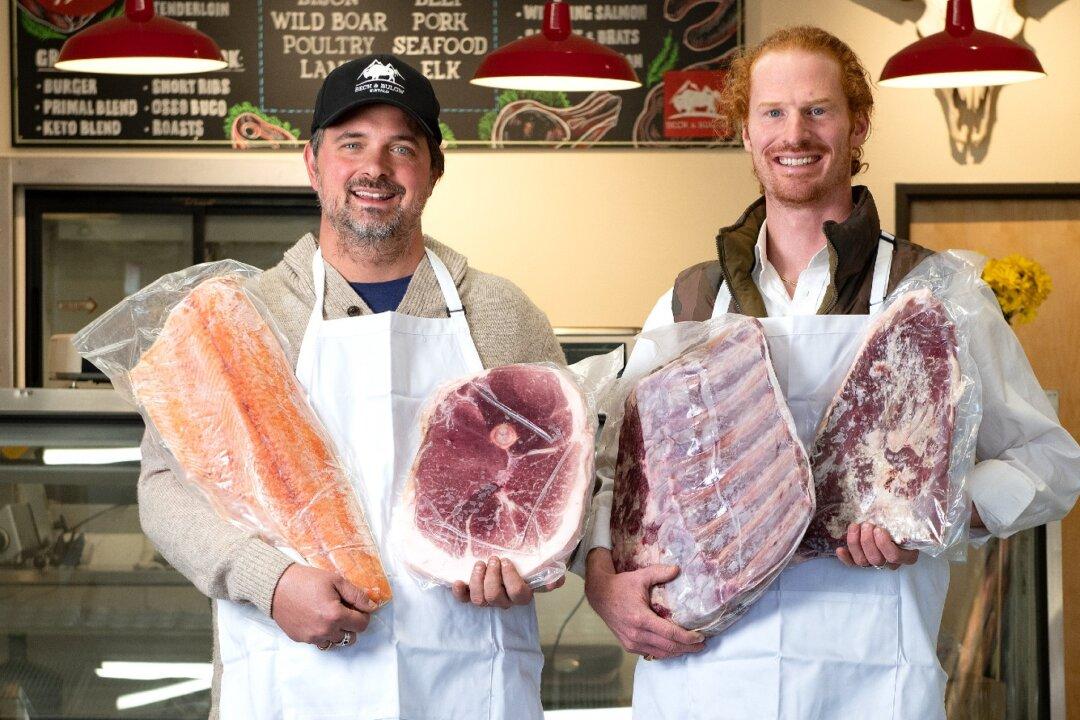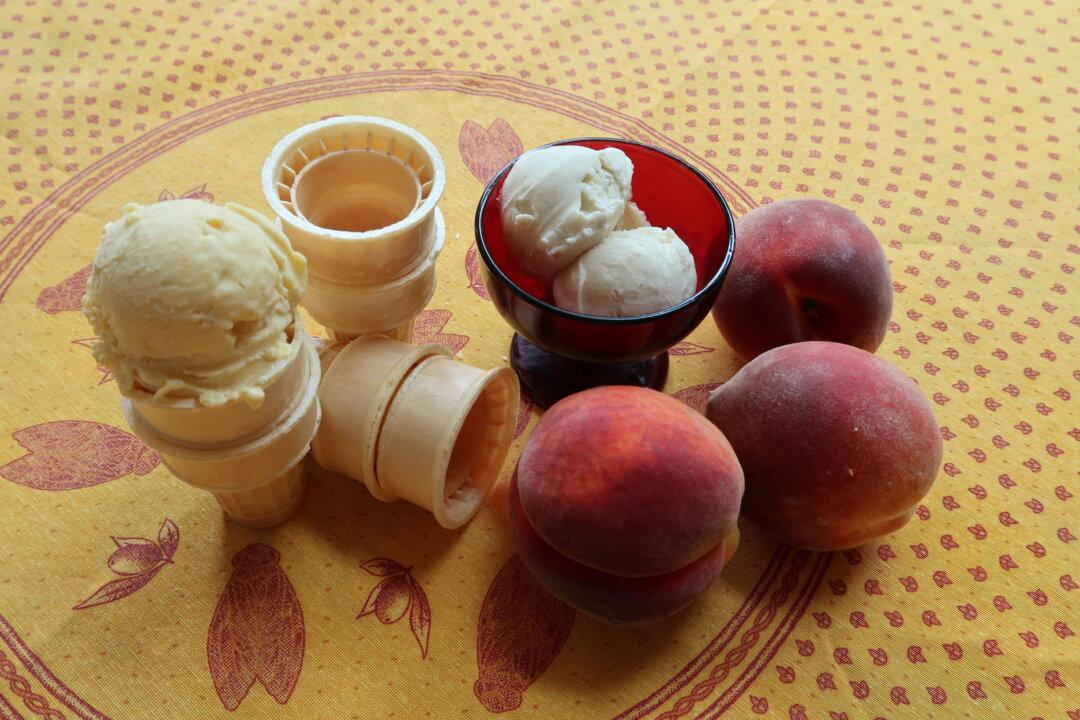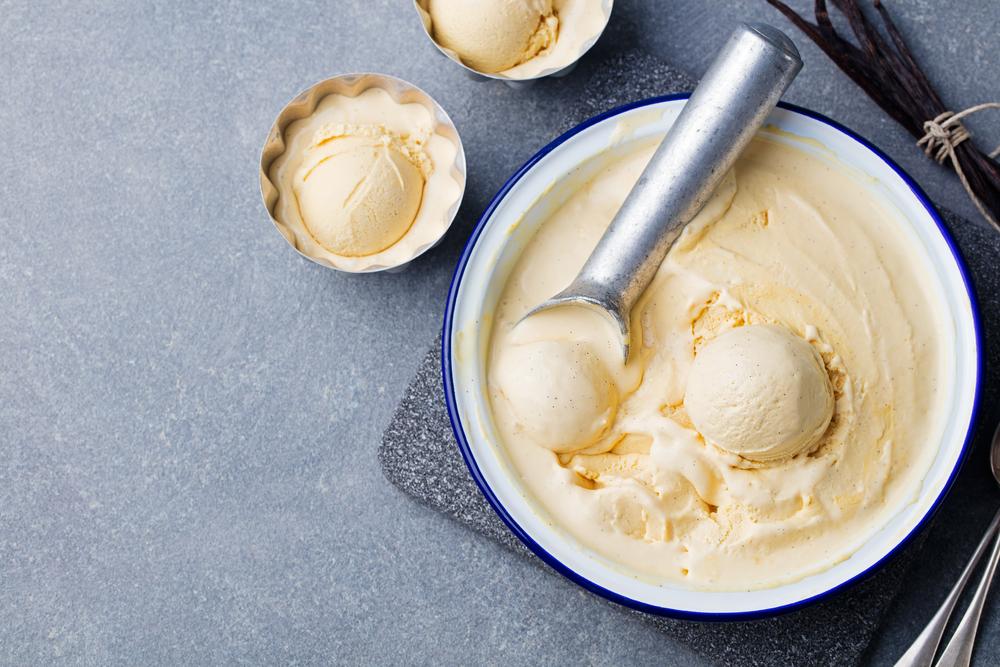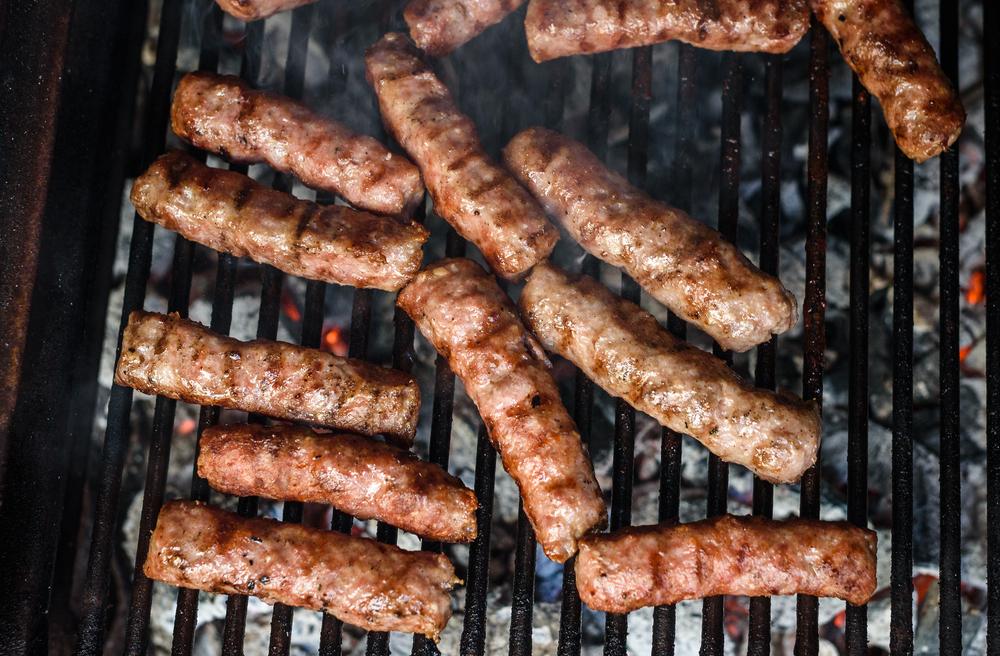If you wander into Beck & Bulow, an unassuming butcher shop under a red awning on Cerrillos Road in Santa Fe, New Mexico, you might find yourself standing side-by-side with Hollywood A-listers (or their chefs) and a cowboy buying a tomahawk. That’s not the iconic war axe of some indigenous North American tribes, but rather a 32-ounce bison ribeye steak, a thick, buttery-rich slab with the long rib bone still attached. In addition to tomahawks, walk-in customers will find a wide range of frozen bison and other wild meats in freezers next to ones full of wild Alaskan seafood. The butcher on duty is ready to provide fresh cuts to both wholesale and retail customers.

Tony Beck (L) and JP Bulow, the duo behind Beck & Bulow, show off wild provisions from their butcher shop in Santa Fe, New Mexico. They formed a friendship, and eventually a business partnership, based on their shared spirituality and lifelong interest in Native American culture. Douglas Merriam





